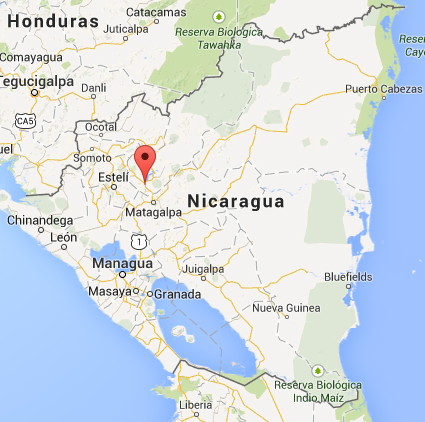Sisle, Nicaragua
![]()
![]()
![]()
![]()
![]()
![]()
![]()
![]() Click on Programs to learn more about their work in this community
Click on Programs to learn more about their work in this community
General Information

| Population* | 4553 |
| Average # of people per home | 8 |
| Pregnant Women | 142 |
| Women of Reproductive Age | 460 |
| Population Under 5 |
660 |
| Religious Affiliation |
70% Catholic; 30% Evangelical |
| Electricity | Yes |
| Municipality | Jinotega |
| Department | Jinotega |
| Health Center | Yes, open 7 days a week |
| Road conditions | The main access road is dirt and is in good condition at this time. |
* Population does not reflect how many patients will be seen on Medical
Brigades as many people from surrounding communities come seeking
Medical Brigades medical attention.
Due to its geographic position, the community of Sisle is a very vulnerable community to suffer environmental effects.
The community of Sisle has electricity and piped water. Since these homes do not receive any sanitation treatment, health problems often arise. This population does not have adequate hygienic services as the latrines they have are now saturated. This occurs due to the type of soil in the region. Not only does this provoke the prevalence of endemic diseases in the zone like hepatitis, diarrhea, cholera, etc., but , this is also an environmental risk.
This community has a health unit (puesto de salud) which is open 7 days a week. This unit has 2 nurses and one physician on staff. Due to the size of the population, the medical supplies in the unit are not suffucient to serve the needs of the community.
The main health issues among the population are malnutrition, which mainly affects children under 5. Prevalent diseases in childhood also include parasites, diarrhea, and respiratory infections. Among young adults and teenagers, the biggest issue is pregnancy. In older ages the most frequent diseases are hypertension and diabetes.
The main economic activities of these communities are agriculture, cattle and fishing, basic grains production like (beans, corn and sorgo). Even though the soils in this zone are very productive, most of the people cannot cultivate the land due to the fact that there are many landowners. Resources in the region are poorly distributed; a few have too much and many have too little. The average income per family is 4 dollars a day.